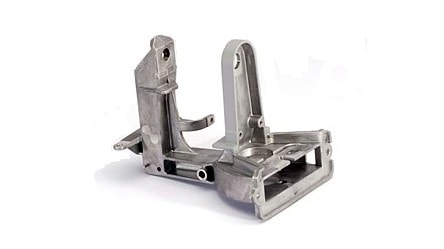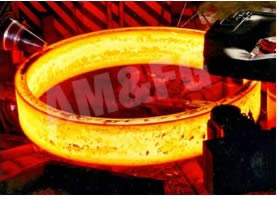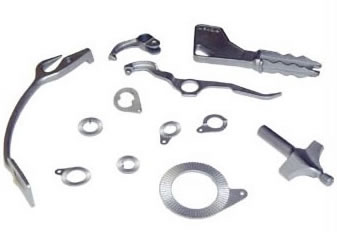Steel forging companies have stuck to using traditional forging methods for many years. Steel forging is a process that has existed in a similar format for thousands of years. Metal forging is simply the process of using a tool or press to shape metal into a desired shape. Typically, most steel forging companies shape their metal pieces using the hot forge method, which shapes the metal pieces while it is still hot.
So what causes manufacturing companies to still use metalworking processes that were invented hundreds of years ago? Why haven’t these companies invented new ways to shape and form metal pieces? In reality, there are few metalworking processes that can out perform forged metal. Forging metal actually benefits the metal itself in several different ways, including:
Directional strength: When steel is forged, it actually refines the grain structure of the metal. This helps the metal find the optimum grain flow. This gives the forged metal increased tensile strength, impact toughness, fatigue strength, fracture toughness, and ductility.
Dynamic properties: Through metal forging, steel has increased material uniformity and grain flow. This leads to greater impact toughness, fatigue strength, and fracture toughness. These metal properties are ideal for industries such as aerospace use and automotive parts, where safety and metal integrity is highly important for the safety of passengers and the integrity of the machine.
Structural integrity: One problem with raw metals, and even some metal processed in other ways, is that they often have holes and pores inside the metal. Forging the metal eliminates these void areas by compressing the metal and forcing it to form one solid piece. This gives the metal material uniformity and gives the metal predictable mechanical properties and an even response to heat treatment in the future.
 Die Castings
Die Castings Forgings
Forgings Grey Iron Castings
Grey Iron Castings Investment Castings
Investment Castings Castings & Forgings
Castings & Forgings Bulk Material Handling
Bulk Material Handling Electrical & Electronic Components
Electrical & Electronic Components Flow Instrumentation
Flow Instrumentation Hardware
Hardware Material Handling Equipment
Material Handling Equipment Metal Cutting Services
Metal Cutting Services Metal Forming Services
Metal Forming Services Metal Suppliers
Metal Suppliers Motion Control Products
Motion Control Products Plant & Facility Equipment
Plant & Facility Equipment Plant & Facility Supplies
Plant & Facility Supplies Plastic Molding Processes
Plastic Molding Processes Pumps & Valves
Pumps & Valves Recycling Equipment
Recycling Equipment Rubber Products & Services
Rubber Products & Services